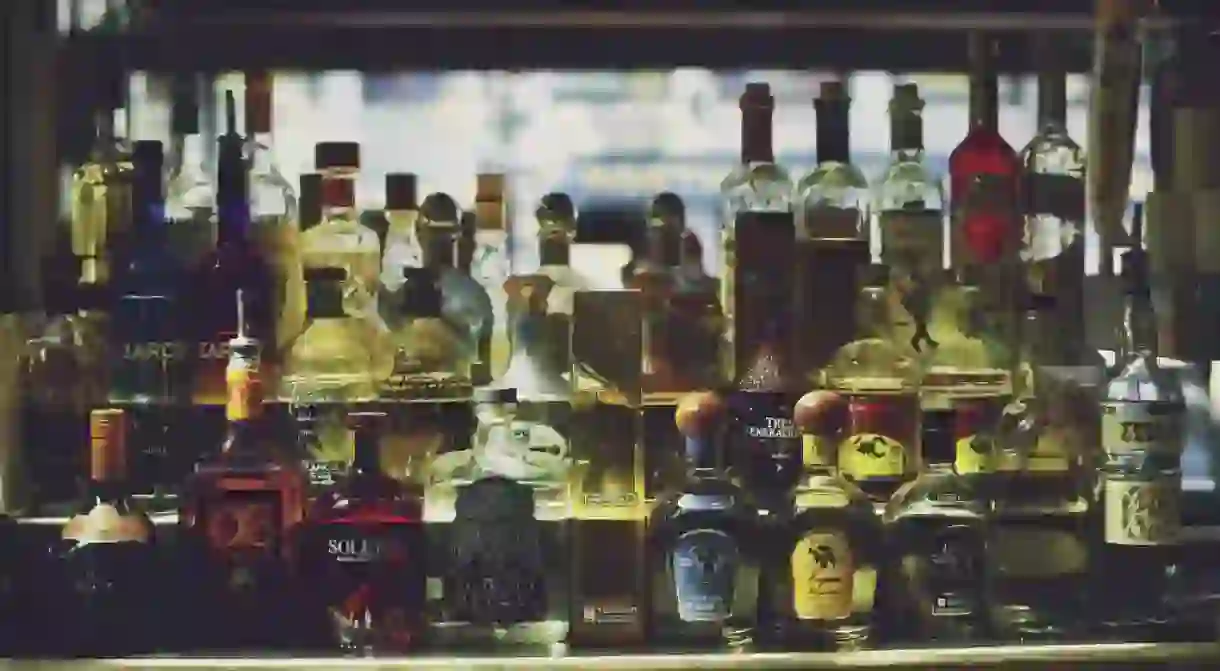20 Things You Didn’t Know About Tequila

If you haven’t heard of tequila then you’re doing something wrong; as one of Mexico’s largest exports and most emblematic drinks, it’s ubiquitous in bars (and homes) across the country and around the world. However, despite its fame and glory, tequila has been playing its cards close to its chest all these years — here are the top 20 things you probably didn’t know about this authentic Mexican drink.
Tequila can be mixed to make drinks other than the classic margarita. A popular Mexican combination is tequila and a fizzy grapefruit flavored beverage, which is interchangeably known as a tequila squirt or by its Sunday best name of a paloma. If you’re more of a Coke guy or gal, then order a charro negro — tequila and Coke.

If you prefer tequila shots, you should exercise caution in Mexico. Tequila has a reputation in other countries as being a shooting spirit, but that’s really not the case; a good tequila should be sipped and savored.
Similarly, don’t ask for salt and lime. You can if you really want to, but it’s not a typical request.
For tequila to be considered tequila it must be produced in the Jalisco town of the same name, Tequila. If you buy a tequila that doesn’t hail from the state of Jalisco, it must legally be marketed as an ‘agave spirit’.

Speaking of agave, that is the plant from which tequila is made. More specifically, tequila can only be made from blue agave. You probably recognize the spiky looking blue agave plant, but did you also know that tequila is made from — not the leaves — but the heart of the plant, otherwise known as the piña?
However, tequila doesn’t have to be 100% blue agave to be classed as tequila. Rather, the cut-off point between tequila and, well, not tequila is 51%. A blue agave content of below 51% cannot be called tequila. Purists insist that only 100% blue agave tequila will do, while the average layperson probably couldn’t even tell you the difference between that and the mixto versions (those with 51%-99% blue agave).
A jimador is the person who harvests, by hand, the agave piña. You might think the word jimador seems unusually familiar — well, that’s because there is a brand of tequila named Jimador.
However, José Cuervo remains the best known and biggest tequila producing brand in the world. A real person, José Antonio Cuervo, was the first man licensed to sell tequila and his business was soon booming; in the 19th century he sold 10,000 barrels just to Guadalajara alone.

There are many different varieties of tequila. Blanco, which is the least aged version; Reposado, aged for 2-12 months; Añejo, aged in oak for 1-3 years; Extra Añejo, aged for 3-5 years. The more the tequila has been aged, the darker it will typically be as it takes on color from the barrels.
Before the reposing can even begin, though, it takes the agave plant at least eight years to reach full harvestable maturity. This means that problems in the growth of the agave plants can cause tequila shortages much further down the line, especially because these plants are very particular in regards to the conditions in which they’ll grow.
After opening a bottle of tequila, you should drink it within two months. Leaving it open any longer puts the agave at risk of losing its distinctive flavor profile.

The word tequila allegedly comes from a Nahuatl word. It’s said to mean ‘the place where plants are harvested’.
Drinking tequila does, surprisingly, have health benefits. It can help lower your cholesterol, stress levels (for obvious reasons) and can apparently help stimulate insulin production. In addition, it’s helpful if you’ve got a cold or stomach problems.
Tequila is a huge symbol of Mexican national pride. The sales of tequila reportedly go through the roof around the dates of Mexican Independence Day in mid-September.
Yet despite this, the majority of tequila is exported and sold in the US. Mainly consumed in the states of Florida, California and Texas, it’s estimated that around 24 million Americans drank tequila at some point in 2015.

Bing Crosby was allegedly the guy responsible for getting Herradura tequila into the US market. Apparently he loved the brand so much that he helped import it north of the border.
This taste for tequila perhaps explains why the most expensive bottle ever sold cost $225,000. The six-year-old tequila that the platinum and white gold bottle contained was supposedly only worth $2500.
Tequila can be turned into artificial diamonds. Researchers from UNAM discovered that tequila can be made into diamonds, which can then be used not for your next diamond necklace, but in the computing industry.

Aztecs allegedly first discovered the predecessor to what we now know as tequila when lightning struck an agave plant. This cooked the piña and led them to discover the sweet, fermented juice it held within. It’s said that from there tequila was eventually developed, although how true this story is could be anyone’s guess.
Finally, National Tequila Day (in the U.S., at least) is July 24th! Have a tipple or two in the name of Mexico.













